





I welcome you to the first alumni newsletter the Anthropology department has published. It has been wonderful getting to know some of you through this project Professor Roberts opened our Anthropology Theory class by affirming that anthropology is a discipline of practice, and after meeting many of you, it has reminded me of how diverse and widespread the practice of anthropology can be. Whether you have continued on to a Master's or Ph D in the field of anthropology, or you took the skills you learned from the major and applied them to a different discipline, it is incredible to see how all of you have used anthropology in your day to day lives.
It brings me great pleasure to introduce to you this newsletter, as it highlights a range of research and events your former professors and classmates have worked on. Don’t be a stranger! In fact, we would like to plan virtual alumni talks next spring with some of you! The current cohort of students would love to learn more about possible paths that can be taken after our time here at St. Mary’s. I wish you the best, thank you, and happy reading!


where alumni, faculty, and students engage in collaborative efforts to enhance their personal and professional use of anthropological knowledge and skills for mutual benefit.-Professor Bill Roberts Hello Anthropology Seahawk alumni!

Ashley Thuthao Keng Dam, PhD (’16) completed her MS in medical anthropology at Oxford U (’18), and earned her PhD at the University of Gastronomic Sciences Pollenzo (’21), and is currently a lecturer in the Global Health masters program at Universiteit Maastricht, Netherlands.
Clara Richards, MPH (’14) joined the American College of Preventive Medicine as the manager for continuing medical education. She will be designing online courses on a range of topics for physicians around the country.
Leslie Walker, MAA (’13) is the Museum Education and Public Programs Manager with a focus on Social Justice for the Smithsonian Institution’s National Museum of African American History and Culture
Meghan Lang (’17) is the Creative Project Manager for Athletic Brewing Co. in San Diego, CA. Meghan has worked in a creative capacity in a number of jobs since graduation, including digital media for SMCM Admissions and creative content specialist for different companies in Florida and California
Mark Jaskolski (’12) is currently living in Chicago and working with a company that supports and empowers people in their workplaces. Mark and his wife have a baby daughter now
Pamela Wye (’05) lives in Washington, DC with her family and is vice president and agent for a real estate company
Gideon Singer (’13) completed his PhD at Purdue University (’20) garnering NSF and Fulbright fellowships along the way He is a digital anthropologist and geospatial scientist based in Baltimore.
CONGRATULATIONS TO THE FOLLOWING
–WE’D LIKE TO HEAR FROM MORE OF YOU!
The Anthropology Club, founded in 2007, continues to maintain an active student membership amongst both majors and non-majors at St. Mary’s. The current executive board consists of Emma Bradshaw ’23 (President), Sophie Hannah ’23 (Vice President), Liz Sharp ’23 (Treasurer), and Lizzie Gill ‘23 (Historian). Over the years, the Club successfully hosts events such as Anthropology Day, which consists of a meme contest, trivia, and a guest lecturer. Other events that the Club hosts include study sessions, movie nights, and field trips. Anthropology Club also occasionally works with Historic St. Mary’s City and Jefferson Patterson Park to host activities such as edible plant walks and pottery making. If any alumni are interested in speaking with the Club or desire to

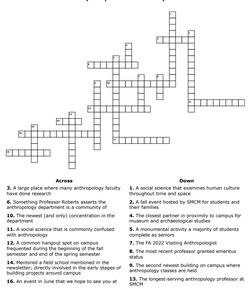
Generous, gracious, gifted with quick wit and critical insight, the much beloved student favorite, Professor Iris Carter Ford, announced her retirement in March 2021, after 28 years of research, service, and teaching at St. Mary’s College of Maryland. Professor Ford came to St. Mary’s College in 1993 and joined the Department of Sociology and Anthropology where she contributed her expertise in African American culture, media, and popular culture to an expanding department. Ever creative and always inquisitive, Professor Ford developed some of the most popular courses on the St. Mary’s campus, including African American Culture, the Cultured Body, and Food and Culture, in addition to classic courses in Cultural Anthropology and Kinship and Social Organization.
Admired and respected by fellow faculty, students, and staff across campus, Professor Ford contributed to the establishment of the Africa and African Diaspora Studies Cross-Disciplinary Studies program and the Women, Gender, and Sexuality Cross-Disciplinary program. She led the department as chair after the Anthropology Department was established in 2007. She received numerous awards and recognition over the course of her career, including a prestigious fellowship from the National Endowment for the Humanities that inspired the first year seminar entitled “Pimp My Ride;” this class evolved into the Anthropology of Stuff as a regular elective offering.

The following excerpts give you a sense of the impact Professor Ford has had on the people and place we know as St. Mary’s College of Maryland.
Professor Bill Roberts wrote, “[Professor Ford] embodies the St. Mary’s Way with her unique generosity and grace. She is an entrepreneur in the best sense of the term as an educator, and in her pedagogical praxis claims to learn more from the students than they from her. Professor Iris Carter Ford has opened hearts and minds across the SMCM campus over many years through her service to the department, the college, and foremost, to the students.”
Professor Julia King wrote, “ … in her 28 years at SMCM, Dr. Ford has taught 172 classes, including fall and spring semesters and summer school, with an estimated 3,100 students in those classes (not including sabbaticals!). These 3,100 students obviously include students who took more than one class from Dr. Ford but the investment is clear: Dr. Ford’s teaching has been foundational for students and for the Department of Anthropology.”
St. Mary’s College president Tuajuanda Jordan wrote, “Dr. Ford is an excellent teacher, an accomplished and soughtafter scholar who has used her expertise not so much for personal gain but rather to help our community better understand who we are as a society steeped in a culture of imperfections. We often speak of citizen scientists as common folks engaged in making observations and collecting samples of the natural world to help us understand it better. n my view, Dr. Ford, The Humanist who has taught, advised and mentored countless numbers
of individuals on the very aspects of life and living, has spent her life compelling us to be citizen humanists and is helping us evolve to become more just, more equitable and better humans.”
Professor Ford was awarded emerita status by the St. Mary’s College of Maryland Board of Trustees at their May meeting this year. Professor Ford continues to reside in the southern Maryland area for the time being and looks forward to “just reading for readings’ sake” and stopping by the College or department just to “see what’s going on.”
Despite being retired, she's not done yet! Professor Ford plans on being active around campus by taking classes and giving lectures in her free time.
A sincere congratulations to Professor Ford for all her many accomplishments and contributions to St. Mary’s College, and best wishes for the next stage of her career.

In 2011 I retired, was awarded the title of Emeritus by St. Mary’s College of Maryland, and here it is already 2021. Time just seems to fly by. It all started in 1975 when I first began teaching at SMCM. At first it was anthropology along with some social science, and later anthropology along with some sociology. Programs evolved. In the beginning (1975, not 4004 B.C.) there were no departments, only four divisions. We, initially two anthropologists, were located in the Division of History and Social Science. With the subsequent shift to departments, we became Sociology/Anthropology (SOAN), and then Anthropology, all the while expanding in faculty, course offerings, programs, and links to other institutions.
During those nearly 40 years before retirement, I was privileged to have hundreds of students taking my classes and joining tours, several of which my wife, Kate, also an
archaeologist assisted in or programmed, to The Gambia, Peru, Chile, and Rapa Nui (Easter Island). In addition to courses, I enjoyed mentoring numerous Independent Studies and St. Mary’s Projects. There were students over the years who joined me as co author of professional meeting papers and as co-authors of publications. A few students even traveled with us to professional meetings to deliver their own prize-winning papers.
From the very start, there were students who took our Division or Department anthropology courses and went on to become anthropologists, archaeologists, and museologists. Others pursued careers like lawyer, teacher (elementary, middle, high), PA, RN, photographer, business development officer, early childhood development program member, community health services, oyster farmer, data analytics, foreign service, book illustrator, adventure/sports writer, and study abroad instructor. A major in anthropology supplies a valuable liberal arts education to the world, preparation for a broad spectrum of careers.
Being a member of the faculty at a liberal arts college provides rich benefits. My first job after graduate school was at a large state university where the numerous faculty of the Department of Anthropology peopled most of my academic and social world. Life at SMCM was very different, with that worldview now quite varied. My world of friends and colleagues included, in addition to anthropologists, a dramatist, artists, historians, biologists, a couple of philosophers, English professors, sociologists, and others. There were wonderful get-togethers and discussions which expanded my world in ways that would not have taken place otherwise. For example, an economics professor who had written about Thorstein Veblen inspired me to read his work and also Veblen’s. After many conversations, a political science professor and I wrote a book chapter about the Tomb of the Unknown Soldier. A philosophy professor led me to explore the works of Georg Hegel which in turn, I addressed in my writings. Two sociologists introduced me to the world of surveys, which led me to conduct surveys of my own with an anthropologist at another institution. A sociologist and I taught a research methods course combining anthropological and sociological approaches to analysis. With a biologist, I team taught (both of us present in the classroom at all times) a course examining anthropological and biological theories of evolution and taxonomy; later that course was repeated with a second biologist. An economist and I developed and taught a computer lab course when SMCM got its first PC labs.
The undergraduate educational institution I attended celebrated its “general education” program. My years at SMCM working with students, faculty, and staff was in a major way an extensively integrated career long program in the liberal arts. Of course, it was not just about me, because the continuing education at SMCM described above involved all of us in a grand conversation of give and take in a world often circumscribed by evolving constrictions of specialization. Depth v. breadth: where is the balance?
When are you going to retire? What do you want to do in retirement? How’s retirement treating you? These questions often crop up in conversations of folks approaching retirement age, or already-there folks asking friends about to retire.
Perhaps I am one of the fortunate retirees. I wanted to continue the examined life: communication, collaboration, research, publication and I have been able to do that. Of course I miss the classroom, the St. Mary’s Projects, and study tours, and I miss seeing colleagues on a regular basis. But following retirement, I am still in contact with colleagues and former students, just not as much. Many of my long term colleagues have also retired and moved to new and distant places. And you know you are superannuated when your former students announce their retirements. But the occasional reunions are magnificent, as was the case of a 2013 shipboard trip through the Galapagos of a big troop of SMCM folks, or the opportunity for me to to teach two anthropology courses at SMCM in the spring of 2018.

Without meetings, committee roles, and routine institutional paper work all necessary for a functioning liberal arts college it turns out that in retirement I have much more time available for research and publication. Kate and I have delivered papers at Pacific conferences which have taken us to California, Bali, and Rapa Nui. We consulted on a Polynesian navigation museum project, taking us to Tenerife in the Canary Islands.
Working with two other editors, Kate and I published, in 2018, a volume about cultural and environmental change on Rapa Nui [pictured below; click the picture to learn more]. We have published a series of papers about Rapa Nui in journals or books. Most recently, Kate and I, working with a botanist specializing in palms, have in press a book chapter about the extinct palm of Rapa Nui. With that same botanist, we are already planning further research on the Rapa Nui palms.

Beginning in 2009, I became interested in pesticides, particularly glyphosate (Roundup). This year two physical chemists and I co authored a computational study of the degradation products of glyphosate. This last project involved coordinating across many disciplines and their journals, such as agriculture, soil science, biology, microbiology, epidemiology, toxicology, chemistry, biochemistry, environmental studies, sustainability, government regulations. This is definitely a liberal arts project, and it is still in progress, with the goal of exploring how metals essential to metabolic pathways can be rendered unavailable by glyphosate.
I’m not done yet!
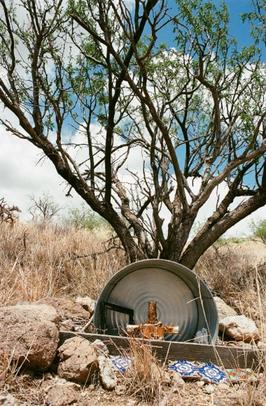
Dr. Brian Smithson joined the department Fall 2022 as our new Assistant Professor of Anthropology! Dr. Smithson is a cultural anthropologist who studies the audiovisual cultures and religions of West Africa. He earned a Ph.D. in Cultural Anthropology at Duke University and a master's degree in African Studies at UCLA. He has taught at Duke, Bowdoin College, the University of Virginia, and now at SMCM. In the Fall, he taught Anthropology 101 (Intro to Anthropology) and is planning on teaching a variety of courses including Cultural Anthropology and Cultures of Africa in the Spring semester.
We encourage you to connect with Dr. Smithson and send along a warm SMCM welcome and congratulations. He is reachable at bcsmithson@smcm.edu.



Despite the extremely unfortunate emergence of the Covid-19 pandemic in March 2020, the Department has kept its tradition of inviting Distinguished Scholars and Visiting Anthropologists to campus. Our speakers have ranged from applied anthropologists and archaeologists using their time in the field as an opportunity to shed light on and deconstruct social issues to primatologists making significant headway in studying primate behaviors, population dynamics, and more! The Distinguished Scholar and Visiting Anthropologist for the Spring 2023 semester are still in the works and not confirmed, but we look forward to not breaking the streak and providing students with real-world field expertise and encouraging strong applied anthropological principles.
To learn more about the Department's Visiting Speakers, click here. The further you scroll, the further back in time you go.
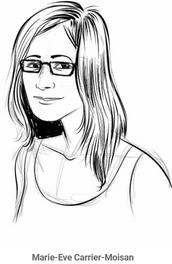
In the summer of 2021, five students joined Professor Julia A. King and archaeologists Scott M. Strickland, Travis Hanson, Isabelle Tonkavitch, and Patrick Wilkinson at the Thomas Gerard Site located in Bushwood, Maryland. Thomas Gerard was granted St. Clements Manor in 1638. St. Clements was one of only two manors in the Maryland colony that developed as Lord Baltimore had intended: with its own court baron and court leet. The team focused on identifying Gerard’s manor house and collecting additional evidence about life at St. Clements between 1638 and 1672.
Gerard was a rough and tumble entrepreneur, a Catholic who served on Lord Baltimore’s council and then years later tried to overthrow Baltimore’s government. After this attempt. he was exiled to Virginia, only allowed to return after he promised to stay out of politics. Through sometimes sketchy dealings he acquired enormous wealth and, at his death in 1672, was one of the largest landholders in the colony.
Gerard was one of the first colonists to move out of St. Mary’s City in the first years of colonial invasion, moving to St. Clements Manor when it was still occupied by Indigenous communities. The discovery of Gerard’s manor house site in 2005 by archaeologists from the Jefferson Patterson Park and Museum was one of that year’s most significant discoveries. The Thomas Gerard Site provides an opportunity to examine how Gerard, his family, and his indentured servants established themselves on the English frontier.
After spending a week in the anthropology laboratory washing and cataloging materials previously collected from the Gerard Site, students moved screens, shovels, and small tools to the site. Since the eight-week project began in early May, the weather was mostly tolerable, at least through May and early June.
The students’ first goal was to learn more about a rich midden or area of refuse build-up located where visitors to St. Clements Manor would arrive at the manor house. Eight units and several tested features in this area reveal a midden containing literally thousands of artifacts, including Native-made ceramics and tobacco pipes. Cloth seals, a glass projectile point, and copper scrap indicate that this area functioned as an important trading post at which English and Native people interacted. The glass projectile point fragment is the only glass point recovered from anywhere in Maryland. The midden also contains thousands of animal bone fragments which will be studied in the near future.

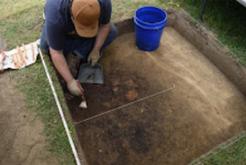
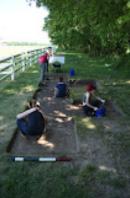
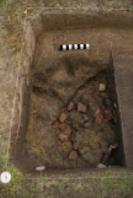
As part of their learning experience, students excavated features or pits that intruded the subsoil, keeping careful records as they took apart features. This included features in the midden area and features located about 50 for 60 feet away in close proximity to the manor house. One pit, which was probably initially excavated for clay to make bricks, was packed with brick, nails, tobacco pipes, and Morgan Jones ceramics. Morgan Jones was an indentured
servant on a neighboring plantation who produced ceramic vessels for the neighborhood.
On the last day of the project as so often happens in archaeology – students uncovered a large palisade ditch, with traces of the palisade molds clearly visible. Gerard had clearly fortified his manor house with a strong, sturdy fence, but whether he was afraid of Native people or his English neighbors or both is up for debate given his history. The students uncovered a five-ft section of the palisade line and staff plan to return to the site in late September to see if we can chase it. This palisade appears to be the earliest domestic fortification known in Maryland, predating Pope’s Fort by several years.
The Thomas Gerard Site is located on private property in a rural area of St. Mary’s County. The property owners allowed the team to spend six weeks in their pasture, dodging horses, because the owners understood the significance of the site. The 2021 investigations at the Gerard Site were funded by generous grants from the Preservation Maryland, the St. Mary’s County Board of Commissioners, and the Society for Colonial Wars in the State of Maryland. Once processed, the artifacts and records will be transferred to the Maryland Archaeological Conservation Laboratory in St. Leonard.
Artifacts and ecofacts embedded and preserved in the ground provide archaeologists with the opportunity to reconstruct the culture, livelihoods, subsistence practices, environments, social organization, etc. of people who lived in the past. This is especially true in the context of studying the Clovis period (~13,000 - 11,000 BP) during the end of the last ice age when the first people arrived in North America. Clovis sites are scarce and fairly spread out across North America. This summer, I spent 30 days in the field conducting excavations under Drs. Todd Surovell and Madeline Mackie at the La Prele Mammoth Site in Converse County, WY near the town of Douglas. La Prele is a Clovis mammoth kill and camp site that is approximately 12,900 years old. Thanks to the University of Wyoming and the National Science Foundation, archaeologists and graduate students like myself have the ability to better interpret the Clovis culture and how these people organized themselves socially, spatially, and economically.
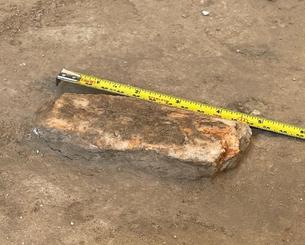
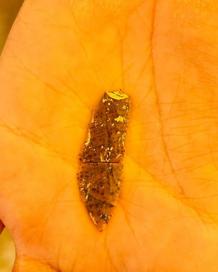
The first ten day session involved excavating a series of test units to assess where the highest distribution of artifacts were located. Then a larger block was excavated during the second two ten day sessions surrounding the test unit that ended up having the most artifacts within it. In terms of excavation procedure, each 1x1 meter test unit was sectioned into four 50x50 cm quads (NW, NE, SW, & SE) excavated in 5 cm arbitrary levels. Each artifact larger than one centimeter was mapped in place with a total station so that the provenience of the Clovis aged material remains could be recorded for future research. Once a quad had been dug to the appropriate elevation, the sediment would be placed into a bucket, assigned a field specimen number, and then sent down to the water screen where additional small lithics and bone could be found. Detailed notes and paperwork were essential to recording changes in artifact distribution and differences in the soil. For example, La Prele has a lot of bioturbation which occurs when past rodents, insects, plants disturbed the sediment. Therefore, artifacts can become displaced if they are located within a krotovina. Krotovinas are animal burrows filled in with organic and mineral materials over time, creating stratigraphic ambiguities. Calcium carbonate nodules that formed in place over time are also common at La Prele which often make troweling a bit difficult.
Clovis people are generally considered to have been highly mobile, large-game hunters. At La Prele, it was interesting to not only have the opportunity to excavate the flakes that were knocked off of chert nodules during the tool making process but also to recover stone tools like endscrapers used for scraping animal hides, blade like flake tools, projectile point fragments, and preforms left behind right before a projectile point was produced. Another interesting find included two channel flakes that conjoin together. Channel flakes are considered to be the last few flakes knocked off before a Clovis point was cre-
-ated. Fieldwork at La Prele also resulted in the recovery of a large number of faunal specimens. Examples include a bison long bone fragment that had been smashed for the purpose of getting marrow out of the bone, mammoth ivory, an ungulate mandible fragment, several ribs, the tarsal of a large mammal, rodent bones, and several other bone fragments from medium sized mammals like artiodactyls. During the third ten day session, a small bone needle fragment was found in the water screen. The bone needles in the La Prele assemblage are the oldest bone needles to have been found in North America south of the continental ice sheets! Finally, while future research is needed to confirm, our excavations likely were within the proximity of a hearth feature due to the charcoal stains present in the soil at the cultural level, large number of small calcined and burnt bone fragments recovered in certain areas of the excavation block, and many flakes that had been burned as reflected by the dark red color of the chert.
My experience at La Prele was extraordinary! If you are interested in excavating at La Prele, I encourage you to apply for the University of Wyoming Archaeological Fieldschool. Fieldwork opportunities like the excavations at La Prele are incredibly valuable if you have the determination and drive as an anthropology student or a student of an interdisciplinary major at SMCM.


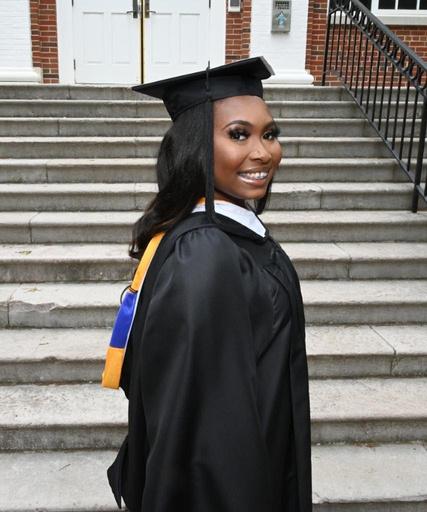

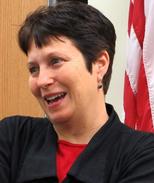
Department Chair Professor of Anthropology jking@smcm.edu
Associate Professor of Anthropology lgijanto@smcm.edu
 SUSAN LANGLEY
SUSAN LANGLEY
Adjunct Professor of Anthropology sblangley@smcm.edu
 HENRY MILLER
HENRY MILLER
Adjunct Professor of Anthropology henrym@digshistory.org
Adjunct Professor of Anthropology TravisP@digshistory.org
Project Archaeologist mdpostemski1@smcm.edu

Professor of Anthropology wcroberts@smcm.edu
Adjunct Professor of Anthropology psamford@smcm.edu


Assistant Professor of Anthropology bcsmithson@smcm.edu




Adjunct Instructor of Anthropology smstrickland@smcm.edu
LESLIE WALKER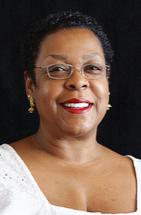
Adjunct Instructor of Anthropology lpwalker@smcm.edu
Adjunct Professor of Anthropology prwilkinson@smcm.edu

Associate Professor Emerita of Anthropology icford@smcm.edu



Professor Emeritus of Anthropology dwingersoll@smcm.edu
Office Associate II smmadison@smcm.edu